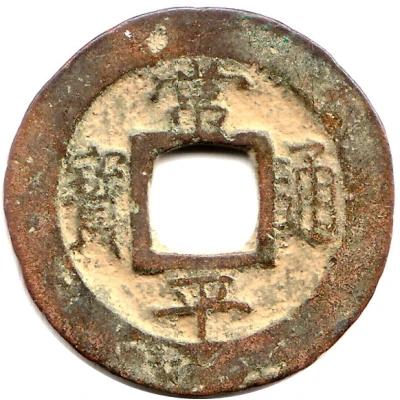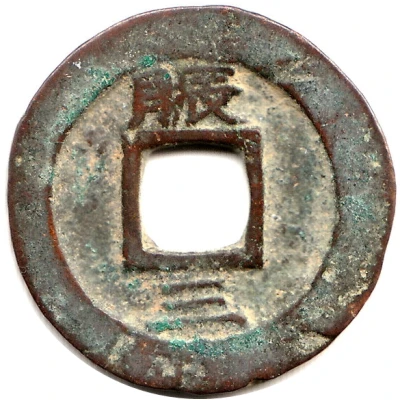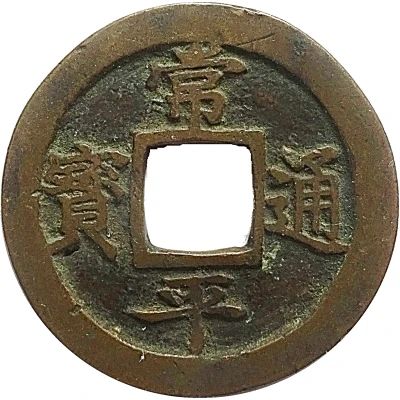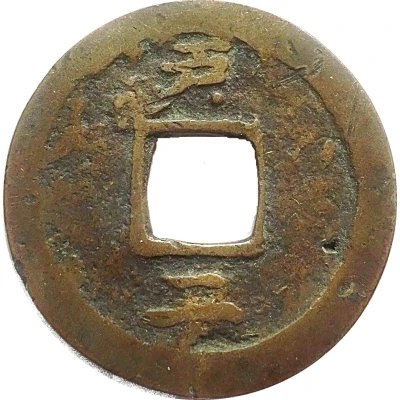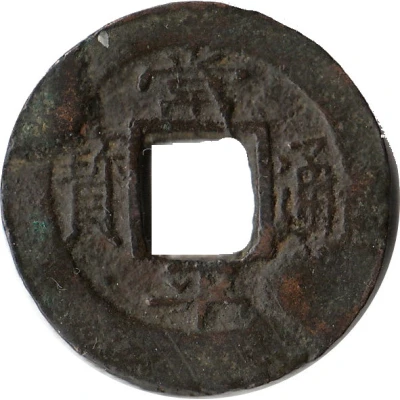
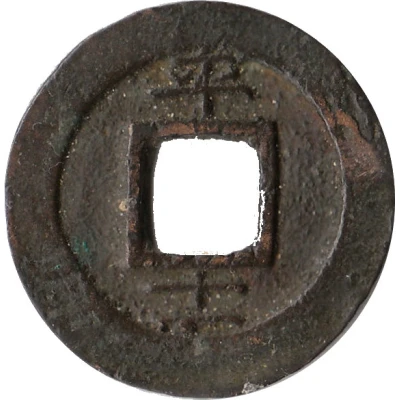

© Christopher Li (CC BY-NC-SA)
1 Mun Pyong ND
1727 year| Copper | 4.50 g | 24 mm |
| Issuer | Korea |
|---|---|
| King | Yeongjo (1724-1776) |
| Type | Standard circulation coin |
| Year | 1727 |
| Value | 1 Mun (0.001) |
| Currency | Kingdom of Joseon - Mun (1633-1892) |
| Composition | Copper |
| Weight | 4.50 g |
| Diameter | 24 mm |
| Thickness | 1 mm |
| Shape | Round with a square hole |
| Orientation | Medal alignment ↑↑ |
| Demonetized | Yes |
| Updated | 2024-10-06 |
| Numista | N#77788 |
|---|---|
| Rarity index | 83% |
Reverse
Mint mark at top, serial number at bottom.
Denomination right to left
*平 (Pyŏng): Pyong'an Provincial Office
Script: Chinese (traditional, regular script)
Lettering:
平
十
一
Translation: Pyong'an Provincial Office, series 11
Interesting fact
The 1 Mun (Pyong) ND (1727) coin from Korea was made of copper, which was a common material used for coinage during that time period. However, what's interesting is that the coin was designed with a unique square shape, which was a departure from the traditional round shape of most coins. This square shape was chosen to symbolize the earth, and it was believed to bring good luck and prosperity to the people who used it. It's also worth noting that the 1 Mun (Pyong) ND (1727) coin was issued during the reign of King Yongjo, who was known for his efforts to promote economic growth and stability in Korea. The coin was used as a means of facilitating trade and commerce, and it was widely used throughout the country. Overall, the 1 Mun (Pyong) ND (1727) coin is an interesting piece of history that provides a glimpse into the economic and cultural practices of Korea during the 18th century.
